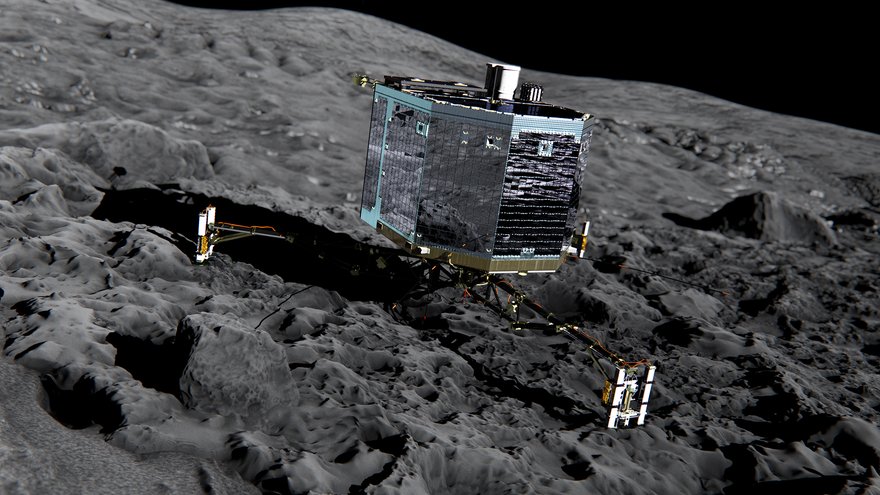On 12 November, the world cheered as the European Space Agency's Rosetta mission successfully landed the Philae probe on the surface of a comet 500 million km from earth. One company cheered a bit louder - because its cables had also made the journey.
Huber+Suhner is well known to demanding data center customers, but none of its customers have required cable assemblies which could work in the vacuum of space for a ten year mission taking it beyond the orbit of Jupiter, culminating in a rendezvous with a comet 4km across, travelling at 135,000km per second and the first ever landing on a comet's surface.
Cables in space!
The 100kg Philae Lander and the 2900kg Rosetta orbiter were assembled in clean rooms ten years ago before the launch in 2001, and both include various cable assemblies from Huber+Suhner. Now in situ at comet 67P/Churyumov-Gerasimenko, they have played their part in relaying information back to Earth.
Landing in shadow on the surface, Philae is curently dormant due to a lack of solar energy, but it contains ten scientific projects; it has sent back valuable scientific data, and may yet wake up again. Meanwhile, the Rosetta project will monitor the comet's progress and the changes that takes place as it falls towards the Sun, will losing material in the form of water ice and dust.
For the radio frequency connections in the transmitting and receiving antennas, as well as the antennas in the space probe and the lander, Huber+Suhner delivered 50 lightweight cable assemblies for signal transmission. Their mechanical and electrical properties were rigorously tested by ESA.
"Thus far, no space probe has ever accompanied a comet, approached it, and observed it for months from a short distance," said a statement from the company. "With our cable assemblies for aerospace applications, Huber+Suhner has also played a part in the success of the mission."
Additional reporting by "Buzz" Boyle

